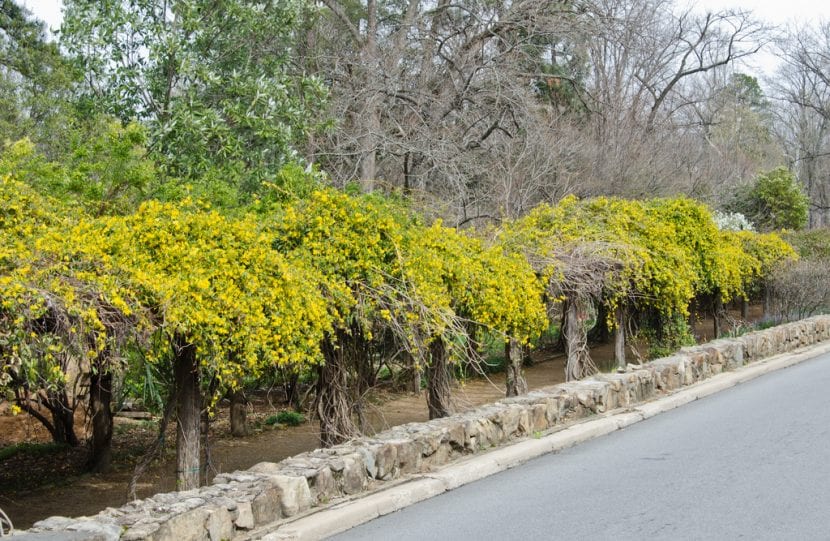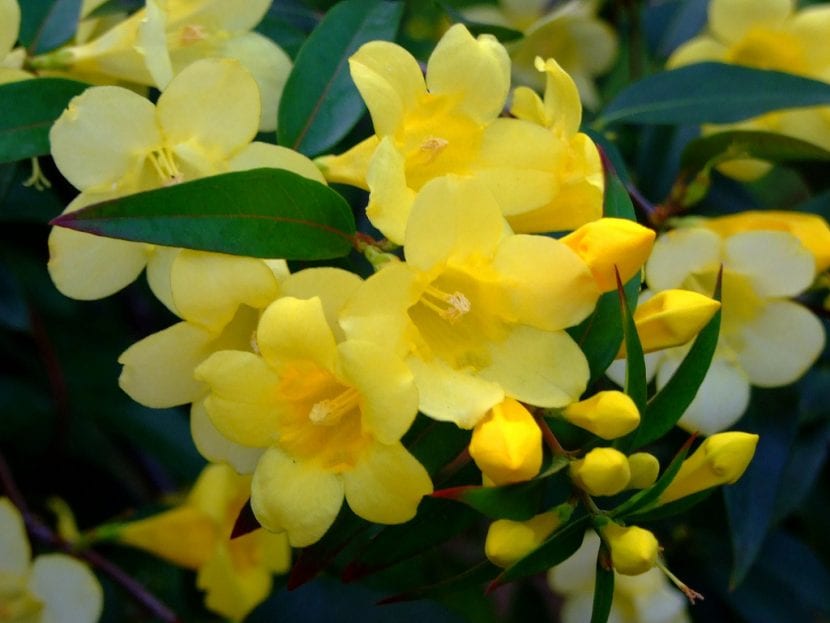
Image - Wikimedia / H. Zell
El Gelsemium sempervirens It is a magnificent little-known climbing plant, but interesting to have in small gardens or even patios. Its flowers are large, yellow, and also emit a very pleasant aroma, similar to jasmine.
As if that were not enough, it remains evergreen, so that its beauty will be visible throughout the year. Dare to know her 🙂.
Origin and characteristics

Image - Flickr / Suzanne Cadwell
It is a evergreen climbing plant whose scientific name is Gelsemium sempervirens, although popularly it is known as gelsemio or Carolina jasmine. It is native to the southern United States (Virginia, Carolina, Florida, and Texas), Mexico, and Guatemala.
It grows to a height of 15 meters, but it tolerates pruning well so you don't have to worry about this 🙂. Its leaves are glabrous, 4 to 8cm long by 1-3cm wide, lanceolate.
The flowers are grouped in cymes of 1-8 units, yellow in color. The fruit is a 12-18 x 7-9mm capsule, and inside you will find about 5 to 7 winged seeds of a brownish color.
What uses does it have?
Gelsemium is a plant that can be used as an ornamental, but also medicinal as:
- May relieve migraine.
- It helps to sleep, as it is sedative.
- It is used against kidney colic and menstrual pain.
- It is a good remedy against diarrhea and colitis.
But yes, it is important to note that in high doses it is toxic, causing nausea and even respiratory paralysis. Consult a doctor before starting any treatment.
How do you take care of yourself?

Image - Flickr / Kai Yan, Joseph Wong
If you want to have a copy of Gelsemium sempervirens, we recommend that you provide the following care:
- Location: outside, in full sun or in partial shade.
- Earth:
- Pot: universal growing substrate.
- Garden: fertile, well-drained soils.
- Irrigation: 4-5 times a week in summer, and every 3-4 days the rest.
- Subscriber: in spring and summer with guano for example, following the directions specified on the package.
- Multiplication: by seeds in spring.
- Pruning: late winter.
- Rusticity: it resists frosts down to -7ºC.
Did you know this plant?